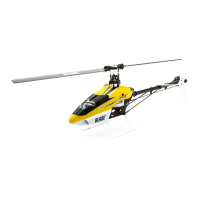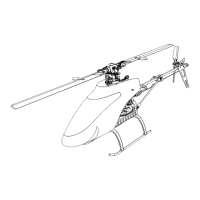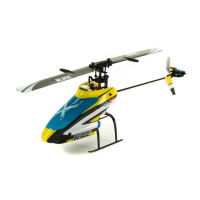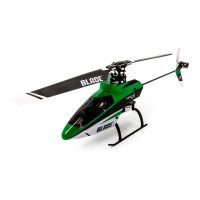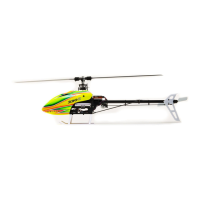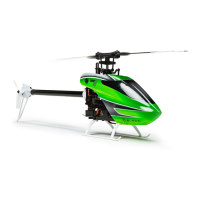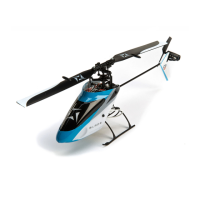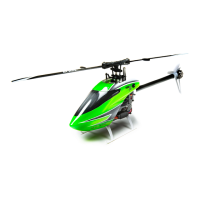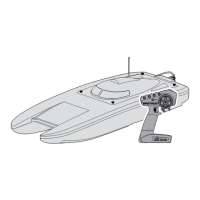EN
10
First Flight Preparation
• Remove and inspect contents
• Begin charging the ight battery
• Program your computer transmitter
• Install the ight battery in the helicopter
(once it has been fully charged)
• Bind your transmitter
• Familiarize yourself with the controls
• Find a suitable area for ying
Flying Checklist
• Always turn the transmitter on fi rst
• Plug the ight battery into the lead from the ESC
• Allow the receiver and ESC to initialize and arm
properly
• Fly the model
• Land the model
• Unplug the ight battery from the ESC
• Always turn the transmitter off last
Consult your local laws and ordinances before
choosing a location to y your aircraft.
We recommend ying your aircraft outside in calm
winds or inside a large gymnasium. Always avoid
ying near houses, trees, wires and buildings.
You should also be careful to avoid ying in areas
where there are many people, such as busy parks,
schoolyards or soccer elds.
It is best to y from a smooth at surface as this
will allow the model to slide without tipping over.
Keep the helicopter approximately 2 ft (600mm)
above the ground. Keep the tail pointed toward you
during initial ights to keep the control orientation
consistent. Releasing the stick in Beginner Mode
will allow the helicopter to level itself and activating
the Panic Recovery button will level the helicopter
quickly. If you become disoriented while in Beginner
Mode, slowly lower the throttle stick to land softly.
During initial ights, only attempt takeoff, landing
and hovering in one spot.
Takeo
Place the model onto a at, level surface free of
obstacles and walk back 30 feet (10 meters).
Slowly increase the throttle until the model is
approximately 2 ft. (600mm) off the ground and
check the trim so the model ies as desired. Once
the trim is adjusted, begin ying the model.
Hovering
Making small corrections on the transmitter,
try to hold the helicopter in one spot. If ying in
calm winds, the model should require almost no
corrective inputs. After moving the cyclic stick and
returning it to center the model should level itself.
The model may continue to move due to inertia.
Move the cycle stick in the opposite direction to
stop the movement.
After you become comfortable hovering, you can
progress into ying the model to different locations,
keeping the tail pointed towards you at all times.
You can also ascend and descend using the
throttle stick. Once you’re comfortable with these
maneuvers, you can attempt ying with the tail in
different orientations. It is important to keep in mind
that the ight control inputs will rotate with the
helicopter, so always try to picture the control inputs
relative to the nose of the helicopter. For example,
forward will always drop the nose of the helicopter.
Low Voltage Cuto (LVC)
LVC decreases the power to the motors when the
battery voltage gets low. When the motor power
decreases and the red LED on the ESC ashes, land
the aircraft immediately and recharge the ight battery.
LVC does not prevent the battery from over-
discharge during storage.
NOTICE: Repeated ying to LVC will damage
the battery.
Landing
To land, slowly decrease the throttle while in a low-
level hover. After landing, disconnect and remove
the battery from the aircraft after use to prevent
trickle discharge. Fully charge your battery before
storing it. During storage, make sure the battery
charge does not fall below 3V per cell.
Flying the mCP X BL 2
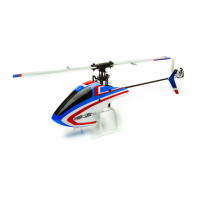
